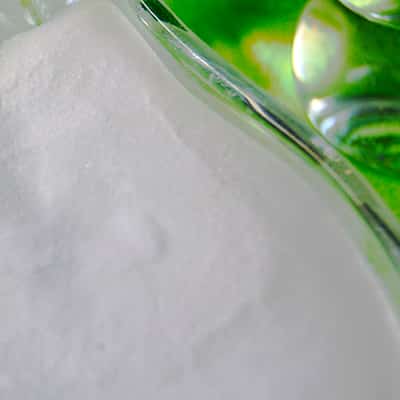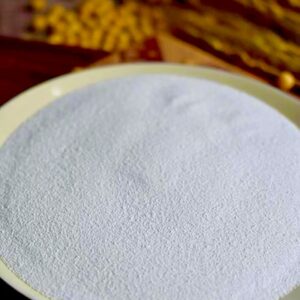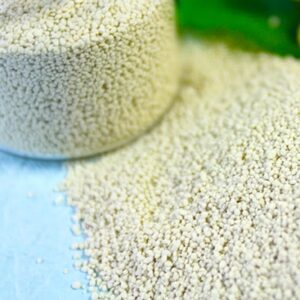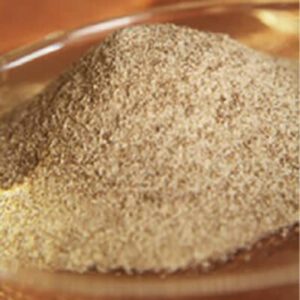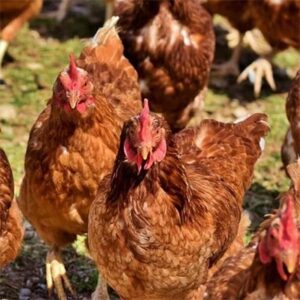Product Video
Product Introduction
Product Description
Highly effective phytase is selected from high-temperature resistant microorganisms and improved by molecular breeding. It is a new type of natural temperature-resistant and efficient phytase. It not only has super high-temperature resistance but also has a super enzymatic hydrolysis effect on phytate phosphorus in feed. After a large number of evaluations, screening, and optimization, it has higher efficiency in decomposing substrate phytic acid, can release more inorganic phosphorus, and can completely reduce the dosage of calcium hydrogen phosphate in the diet. The highly effective phytase further improves the animal breeding level, reduces the feed cost, reduces the use of inorganic phosphorus, and reduces the environmental pollution caused by phosphorus emission from livestock and poultry feces.
Feed enzymes are produced by microbial fermentation and are enzymes that are added to feed to improve digestion and utilization of feed or to improve metabolic efficiency in animals. Enzymes that can be added to feed include Protease Mix, Thermostable Phytase, Highly Efficient Phytase, NSP Enzyme, Lipase, Pectinase, Cellulase, α-Amylase, Alpha- Galactosidase, Beta-Glucanase, Glucose Oxidase, Thermostable Acid Protease, Acid Protease, Thermostable Acid Beta-Mannanase, Beta-Mannanase, Xylanase, etc.
About 70% or more of poultry sticky wheat rations worldwide have enzymes added to them, and nearly 90% of poultry feeds in Europe contain enzymes.
Enzyme preparations are divided into three main categories:
Non-starch polysaccharidases
Non-starch polysaccharide enzymes include xylanase, β-glucanase, β-mannanase, cellulase, α-galactosidase, pectinase, etc., which act on the corresponding NSP in the feed. livestock and poultry do not secrete this type of enzyme and must be added exogenously from the feed, which is the main enzyme preparation for feeding.
Phytase
Phytase has a special spatial structure that sequentially separates phosphorus from phytic acid molecules and degrades phytic acid (salt) into inositol and inorganic phosphorus, while releasing other nutrients bound to phytic acid (salt).
Endogenous digestive enzymes
Endogenous digestive enzymes are enzymes that can be secreted by the animal’s digestive tract itself, mainly proteases, amylases, and lipases. In some special cases, endogenous enzymes also need to be supplemented by the feed.
Product Feature
Phytase can release the various nutrients that are combined with phytic acid, and improve the potential nutritional value of the daily grain. The photoacid in hydrolyzed plant materials, the release of inorganic phosphorus, and the utilization of the total phosphorus of the day. Reduce the use of calcium phosphate and reduce the cost of feed.
Product Parameter
Product Dosage Recommendations:
| Dosage | animal | Phytase activity
(U/kg complete feed) |
Calcium hydrogen phosphate savings
(kg/t complete feed) |
Complete feed total P recommendation (%) |
| 100-150 kg/t of complete feed | piglet | 1000-1500 | 7.0-9.5 | 0.47 |
| growing pig | 1000-1500 | 8.0-11.0 | 0.39 | |
| Broiler | 1000-1500 | 7.0-9.5 | 0.46 | |
| Layer | 1000-1500 | 8.0-12.0 | 0.41 |
Package: 25 kg / bag
Activity: 10,000U/g
Appearance: Light yellow or white Granule
CAS number: 37288-11-2
Thermostability: 75℃-90℃
pH range: 1.0-9.0
Particle size: 125 – 300 μm
Species: Poultry, livestock.
HS Code: 2309901000
Product Key Point:
12 months from the date of production under proper conditions in a dry well ventilated and cool place. Keep away from the moisture and avoid storing it in a high-temperature environment. Seal both internal and external packages after use.
FAQ
A: No, according to customer needs.
A: The professional QC team will control the quality of the goods during all mass production, or if you wish, you can arrange a third-party inspection service. We will provide bulk samples for evaluation before shipment.
A: The sample is free, but the freight is payable. Please contact us in advance if you need samples. You can prepay shipping charges via PayPal or Western Union, and we will send samples as soon as we receive your shipping charges. Or you can provide your courier (DHL, TNT, etc.) account to us for pickup.
A: We can provide customers with full supervision of the procurement process and deliver the most satisfactory goods to them.
Accept delivery terms: FOB, CFR, CIF, EXW, CIP, DDP, express; Accept payment currencies: US dollars, Euros.
A: Yes, we do. We are a professional company in livestock farm products. We have a professional and strict quality control, we must provide you the best service for your need. Our product service department will keep in touch with customers and reply at any time.
Yes, we accept ordering samples to check quality. And mixing samples is acceptable.
A: For preparing samples, depending on the number of samples and process requirements, our preparation time is 1-7 days. International express delivery time is 3-7 days.
Related products
-
Animal Feed Additive Products
Animal Feed Additive Liquid Tributyrin
-
Butyric Salts And Formic Acid salts
Livestock Feed Additive 60% Powdered Tributyrin
-
Feed Enzyme
Feed Additive Thermostable Phytase
-
Feed Enzyme
Feed Additive Feed Enzyme Lipase
-
Feed Enzyme
Feed Additive Feed Enzyme Cellulase
-
Feed Enzyme
Animal Feed Additive Alpha-Galactosidase
-
Feed Enzyme
Feed Additive Animal Feed Enzyme Beta-Glucanase
-
Feed Enzyme
Feed Additive Feed Enzyme Glucose Oxidase

